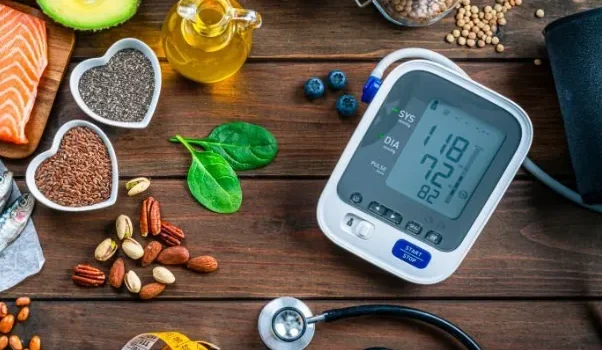
High blood pressure, or hypertension, is a serious health issue affecting nearly half of American adults. Known as the “silent killer,” it often has no obvious symptoms but can cause significant damage to blood vessels and vital organs if left untreated. The good news is that there are many options available for managing blood pressure effectively and reducing the risk of serious complications.
What Is High Blood Pressure?
Blood pressure refers to the force of blood against the walls of your arteries as your heart pumps it around your body. It is measured with two numbers: systolic (the top number) when the heart beats, and diastolic (the bottom number) when the heart rests. A normal reading is below 120/80 mmHg. If blood pressure consistently reads 130/80 mmHg or higher, it is considered high blood pressure.
There are varying levels of high blood pressure:
- Elevated: 120-129/less than 80
- Stage 1 Hypertension: 130-139/80-89
- Stage 2 Hypertension: 140/90 or higher
Unchecked, hypertension can cause severe health problems, including heart disease, kidney damage, stroke, and vision loss. However, with the right approach, high blood pressure can be controlled.
Lifestyle Changes: The First Step in Managing Blood Pressure
For individuals with mild or newly diagnosed hypertension, lifestyle changes are often the first step. Studies show that implementing healthy habits can lower systolic pressure by 5-15 mmHg in many people. Here are some effective strategies:
Adopt a Heart-Healthy Diet
Following the DASH (Dietary Approaches to Stop Hypertension) diet is one of the most effective ways to reduce blood pressure. This diet emphasizes vegetables, fruits, whole grains, lean proteins, and low-fat dairy, while limiting red meat, salt, added sugars, and unhealthy fats. Reducing sodium intake and losing even 10 pounds if you’re overweight can have a significant impact on blood pressure.
Stay Active
Exercise helps manage blood pressure by improving circulation and heart health. Aim for at least 30 minutes of moderate activity, such as walking, on most days of the week. If you have hypertension or other health concerns, it’s important to check with your doctor before starting an exercise routine.
Limit Alcohol Consumption
Excessive alcohol consumption can raise blood pressure. The recommended limit is one drink per day for women and two for men. One drink equals 12 oz of beer, 5 oz of wine, or 1.5 oz of spirits.
Maintain a Healthy Weight
Being overweight puts added strain on the cardiovascular system, which can increase blood pressure. Keeping your weight within a healthy range (BMI between 18.5 and 24.9) and monitoring your waist circumference can help reduce hypertension risk.
Quit Smoking
Smoking narrows blood vessels, making it harder for blood to flow, which can increase blood pressure. Quitting smoking is essential for improving both blood pressure and overall health.
Get Enough Sleep
Lack of sleep can negatively affect blood pressure. Aim for 7-9 hours of sleep each night to help maintain a healthy blood pressure level. Incorporating stress management techniques, like meditation or deep breathing exercises, can also improve sleep quality.
Medications for Blood Pressure Control
If lifestyle changes alone aren’t enough to lower blood pressure within a few months, medications may be necessary. A combination of healthy habits and medication is often the most effective approach. Diuretics are typically the first type of medication prescribed for high blood pressure.
Common classes of blood pressure medications include:
- Diuretics: These medications help remove excess sodium and fluid from the body, relaxing blood vessels. Examples include chlorthalidone and hydrochlorothiazide.
- ACE Inhibitors: These help relax blood vessels by blocking certain enzymes, preventing arteries from narrowing. Lisinopril and benazepril are common ACE inhibitors.
- ARBs: Angiotensin receptor blockers, like losartan and candesartan, relax blood vessels and help reduce blood pressure.
- Calcium Channel Blockers: These relax the blood vessel walls, helping to reduce blood pressure. Amlodipine and diltiazem are examples.
- Beta-blockers: These reduce heart rate and help blood flow more easily. Carvedilol and metoprolol are commonly prescribed beta-blockers.
For those with resistant hypertension (when blood pressure remains high despite multiple medications), doctors may add other treatments or combinations of drugs.
Addressing Resistant Hypertension
Resistant hypertension is a condition where blood pressure stays high even after trying three or more medications. Before adding more drugs, doctors typically try the following:
- Adjusting current medications or trying different combinations
- Reviewing all medications, including over-the-counter drugs, to identify any that may be interfering
- Considering factors like anxiety or stress that could be temporarily raising blood pressure (e.g., white coat syndrome)
- Continuing to prioritize lifestyle changes, such as diet, exercise, and stress management
Emerging treatments, such as renal denervation therapy, are being studied to help those with resistant hypertension. This procedure uses heat to deactivate nerves around the kidneys that are associated with high blood pressure, though it is still under investigation.
Conclusion
Managing high blood pressure involves a combination of lifestyle adjustments and, in some cases, medication. By making small but consistent changes to your daily habits, such as eating a healthy diet, staying active, and reducing stress, you can significantly reduce your risk of serious complications. If lifestyle changes alone are not enough, medications are available to help keep your blood pressure under control. Working closely with your doctor to find the right combination of treatments will give you the best chance of managing hypertension and maintaining long-term health.












